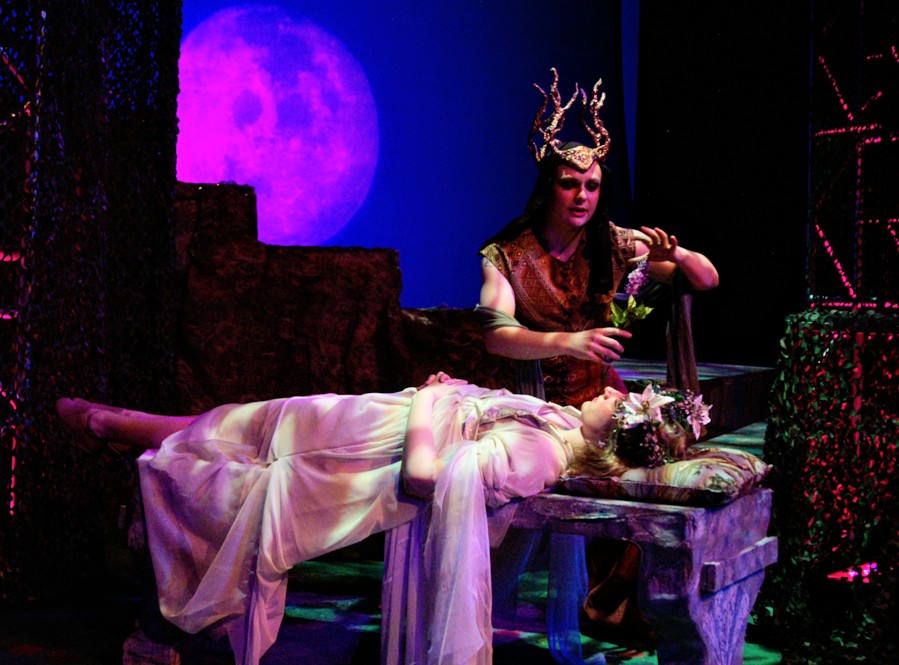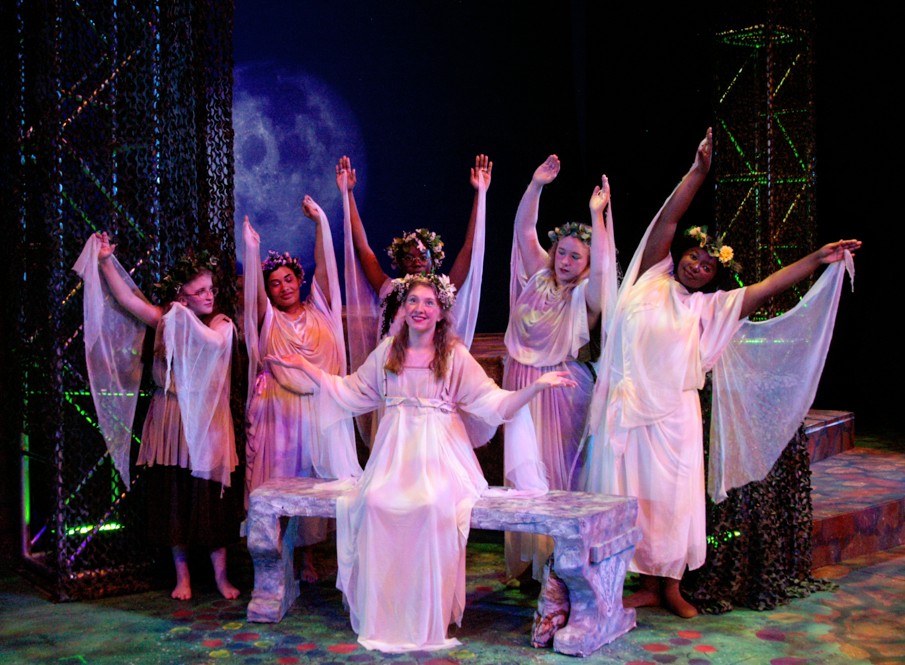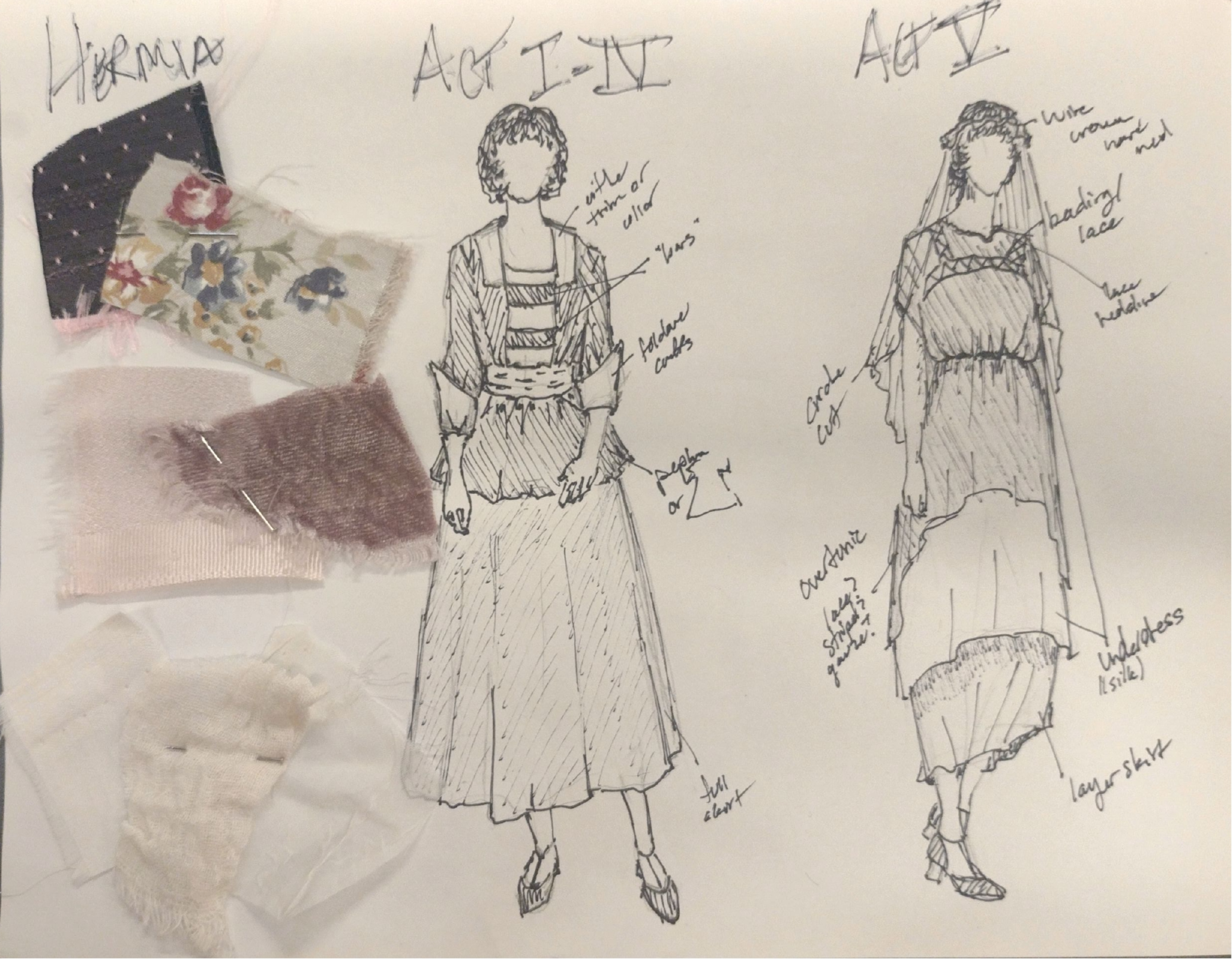Meet Our Member of the Week: Emily Bailey!
May 17, 2024
Emily Bailey is an upstate New York-based costume designer, period costumer, and practitioner of textile sustainability, who is emerging from an academic theatre setting and diving into the professional entertainment arena. She loves to use any and all costume production opportunities she works to promote the conservation of historic sewing techniques and combat the overabundance of textile waste in our society. She prides herself on consistently delivering quality work under budget and keeping clothing waste out of landfills. She is passionate about body activism and positivity, and loves to challenge each individual she encounters in the costuming world to view their bodies as beautiful art and functional elements for powerful things! Check out her interview below!
Tell us a bit about yourself! As live entertainment technicians, we always talk about our work. But who are you, outside of your work in live entertainment?
Outside of whatever fun theatre or sewing project I’m working on, I’m a small-town girl who likes to live life non-digitally and loves spending time outside feeling grass under my feet or grabbing friends for a good antique store/coffee shop/fabric shopping date! I love to indulge in hobbies like cooking and mixology, but I’m a simple human - give me a good rainy day, a book, a cat, and a film score playlist and I’m a happy camper.
What sparked your interest in costume design?
I grew up reading very dramatic classic literature full of gorgeous clothing descriptions and watching period dramas with (semi-accurate) historical costumes. My imagination was always fueled by the poetry, elegance, and humanity of using clothing as a tool to tell stories, especially unconventional or non-modern clothing. After concurrently discovering my passion for theatre, I knew I wanted to combine my love of storytelling and textile poetry in the live entertainment field. I’m also passionate about body activism and combating fatphobia in all areas of society, but costume design & technology afforded me an arena with which to inspire the bodies that I work with and around to live authentically and grow in their ownership and appreciation of their bodies as beautiful tools for art!
USITT emphasizes collaboration across different disciplines in theatre. How do you collaborate with other members of a production team, such as lighting designers, scenic designers, and directors, to achieve a cohesive production?
I am a huge advocate for transparency in the work process and due credit for collaborators in any discipline of theatre because the work that our fellow designers and technicians do is so incredibly complex and time-consuming! I believe that a small amount of background in each technical discipline goes a long way in maintaining a healthy appreciation and context for what our fellow theatre-makers do behind the scenes, so self-education is a must for me. I try to approach every project from a place of fostering open communication and respecting each team member's expertise on a foundation of mutual respect, creating an open door for giving and receiving feedback to support the creation of a well-meshed production and more importantly, a healthy working environment.

Do you have a favorite project you’d like to tell us about? Or maybe a design moment you conceptualized that made a show magical?
I recently completed an independent research project focusing on historical reproduction and sustainability that I am super proud of! I wanted to investigate how textile overconsumption factors into the entertainment and textile industries and how one might go about producing costumes as ethnically as possible, and grow awareness of how heritage crafts like sewing and garment altering are powerful tools in creating a sustainable environment. Using donated, thrifted, repurposed, and small-business-sourced materials only, I was able to create a full, historically accurate ~1905 ladies' outfit from scratch that supported a narrative of applied learning, sustainability, and awareness of the textile industries’ current predicaments. Check out the project on my website!
What do you consider the most rewarding aspect of being a Costume Designer? Conversely, what are some of the biggest challenges you face in this role?
Being able to support the individual journey and characterization that a performer brings to their embodied storytelling is so rewarding for me! If a costume not only allows a performer to be validated and feel at home in their body, but is also measurably interpretive in allowing audiences to better connect with what they see on stage, then I consider the work a job well done. One of the biggest personal challenges I currently experience in being a costume designer is running an internal race against AI - when a chatbot can churn out a brilliant (though possibly soulless) costume design plot in a matter of seconds, the need to maintain relevance and quality in a time when creativity is under attack can be daunting in its scope.
Costumes are something that every actor on stage interacts with, very directly! How do you balance creativity with practicality when you’re designing costumes for a project?
In terms of symbolic practicality, I always strive to make my designs accessible, reining in my own crazy imagination in favor of ensuring visuals can be widely interpreted. As much as I’d love to produce the large-scale, hair-brained designs floating around in my head after digging into every manner of source material, if an audience member can’t connect with what they’re seeing in some way, the design falls flat. In terms of technical practicality, my number one goal whenever I’m designing or producing a costume is to respect the performer’s bodily autonomy and ensure my work allows them to feel comfortable and validated in their body, regardless of what my own intentions are for the costume. The highest form of practicality, in my opinion, is a costume designed and produced to a level that allows the performer to feel free enough to use it as a tool, rather than something to be trapped in and worked through.

As someone who values sustainability in their work, what are some ways costume designers can make their work more sustainable?
Sustainability is an extremely subjective concept - what one budget can afford to support in terms of sustainability is not the same as another. If a designer has the financial means with which to produce costumes using fully sustainable materials- natural fibers, ethnically sourced supplies, and garments built for each performer -then I’d love to see more sustainable narratives being supported by costume designs! Using as many secondhand or repurposed materials as possible, buying locally to reduce carbon emissions from shipping, and even recycling fiber scraps in the production process are all accessible methods of sustainability that can be established easily.
You say you have a passion for heritage sewing. Can you explain what that is for our Members who may not be in the know?
Heritage sewing is a broad term I’ve begun using to encompass the application of historical sewing techniques and methods of frugality into personal and theatrical projects alike. To me, heritage sewing encompasses an attitude of conservation of materials and respect for the slow process of making anything, forming a relationship between creator and creation that a modern, results-based society has lost. In a world where most people do not own nor directly observe the means of producing the garments we wear every day, heritage sewing attempts to take back ownership of the production, care, and respect of the resources that we have and preserve its longevity. Its practical approach is based on applied learning, using tools of historic hand sewing or other textile arts to breathe strength and longevity into old and new builds and contribute to an overall narrative of preservation.
USITT offers numerous resources and opportunities for professional development. Can you share how being a member has benefited your career and artistic growth?
As a USITT member, I had the opportunity to attend my first-ever Conference this past year in Seattle, which truly changed my perspective on the scope of my career! At the conference, I was able to chat casually and professionally with educators and industry professionals, sharing a love of our field with my community. I was also immensely benefited by the incredible innovation and value of the hands-on workshops, going to as many as possible to maximize my conference experience! Through info sessions and expo floor walkthroughs, I was able to meet new friends and experience new tools, opening my eyes to just how amazing our industry is and how much we care for one another. I can’t wait to do more with USITT!
Do you have a favorite costume era you love to design in? What styles or designers inspire you the most?
I am firmly seated in my love for the Edwardian era - with so much romance and elegance in its silhouette, its practicality of production, and its idealized preference given to large bodies, I will always return to that era whenever I can! Film/TV and theatre designers like Toni-Leslie James, Anna Robbins, Linda Cho, and Susan Hilferty have always been my inspiration - from their attention to detail to their ability to bring historical visuals to life again, let alone their being strong women in tech theatre!

Are you working on any projects right now that you’re excited about?
I’m currently working on the biggest and most exciting project I’ve worked on so far - the job market! I’m a fresh college graduate, and as I continue to build up my portfolio with some private commissions, I’m working my way through to finding a place to fully contribute my unique energies to, whether that be to graduate school or to a full-time commitment!